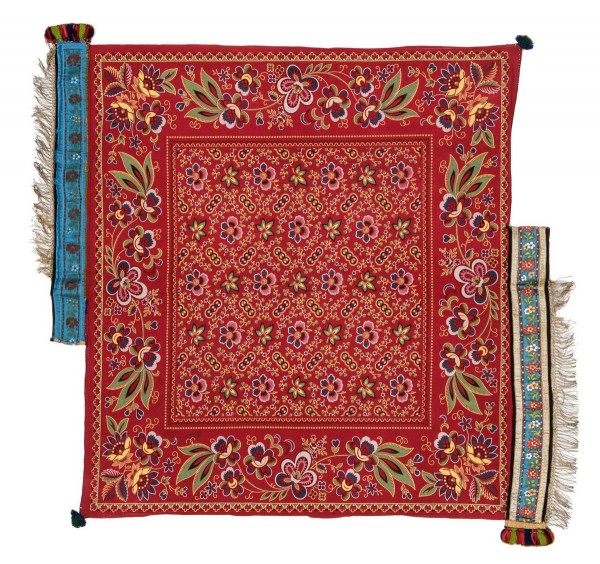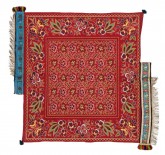In the cities as well as the villages, fashionable women wore red chintz fabrics and headscarves that glowed with blazing color, similar to the plumage of folkloric birds. They were produced at the Baranov enterprise: the Troitsko-Alexandrovskaya and Sokolovskaya factories were located in Vladimir Gubernia. The Struninskaya factory of Asaf Baranov was the largest factory in Russia at the end of the 19th century. Red calico chintz was famous far outside the domestic market: the elegance and charm of their designs meant that they won the top prizes at exhibitions in London, Vienna and Amsterdam time and again. In the All-World exhibition in Paris in 1889, a cloth named “Currant leaf” was awarded the grand prix, after which point the most fashionable Parisians cut a dash in Baranov chintz. Fabrics manufactured by the Baranov factory are easily recognizable by their bright red background and plant patterns printed in yellow, blue and green dyes. The usual motifs were flowers, berries, cucumbers and beans.
Chintz fabric and headscarves made in Russian factories enjoyed popularity not only in their own country but overseas as well. Here their producers received numerous awards at international exhibitions.
The fashion for headscarves and shawls has remained until the present day. Goods from modern factories are in demand from fashionable city women and those in the remote countryside. From the time of its founding and to this very day, factories manufacturing printed chintz keep up the best traditions of Russian artistic manufacturing.

